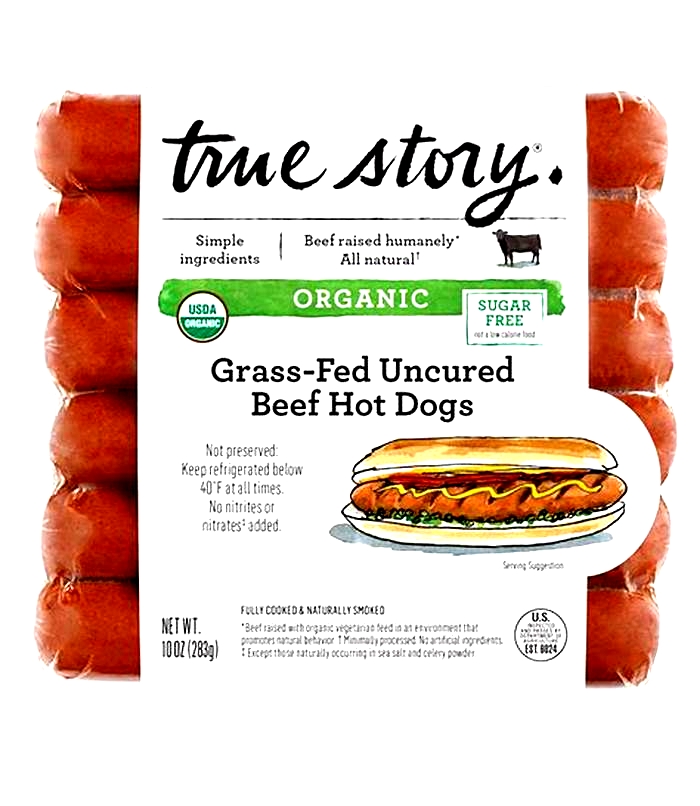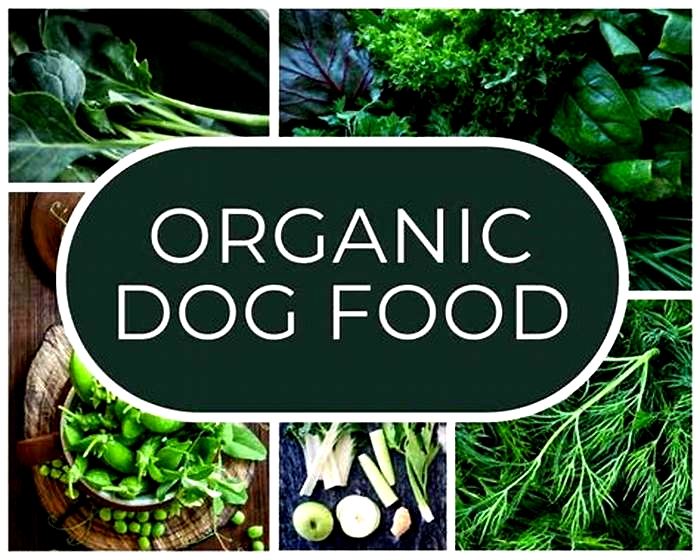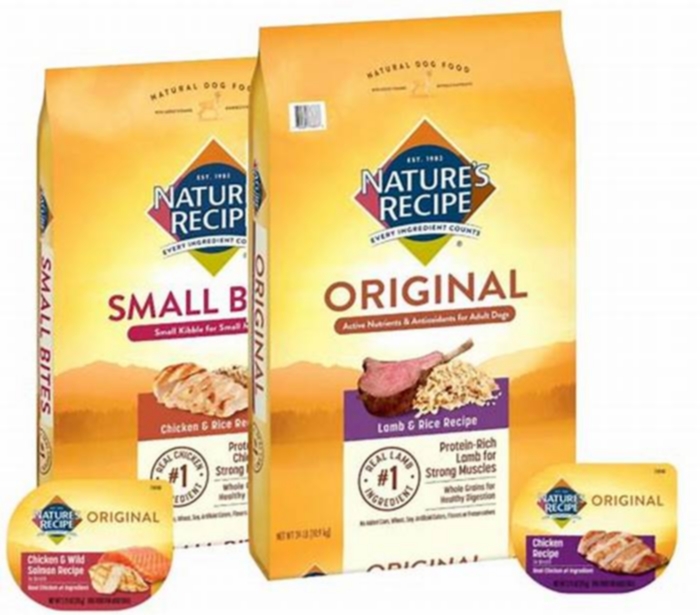Is organic dog food better for dogs

What Is Organic Dog Food?
You might think that organic foods are top-tier and better than nonorganic food. And if organic food is better for people to eat, is it the same for dogs? What does it actually mean if a dog food is organic?
This article will help you interpret dog food labels related to organic dog food, whether its 100% organic or made with some organic ingredients.
What Makes a Dog Food Organic?
The United States Department of Agriculture (USDA) has not yet defined organic specifically as it relates to use of ingredients in pet foods. According to the USDAs National Organic Program (NOP), pet foods claiming to be organic must meet its human food regulations.
And according to the Food and Drug Administration (FDA), There are no official rules governing the labeling of organic foods for pets at this time, but the USDA is developing regulations dictating what types of synthetic additives, such as vitamins and purified amino acids, may be used in pet foods labeled as organic.
However, you may see still see the term organic on pet foods that are made with ingredients that are produced using standard organic practices as these regulations for pet food develop.
What Does Organic Mean?
Organic is a term used to describe food ingredients, for human consumption or for feed for food-producing animals, including meat, produce, and multi-ingredient processed foods, that are grown, raised, or produced according to a specific set of guidelines defined by the United States Department of Agriculture (USDA). These federal guidelines cover a wide range of factors.
Organic Plants
For organic plants, the guidelines relate to:
Not using certain prohibited synthetic pesticides or fertilizers
Not using genetically modified seeds
Preventing GMO contamination on the farm
Organic Meat-Producing Animals
For organic meat-producing animals, the guidelines include:
Raising the animal in living conditions that accommodate its natural behaviors
Feeding organic feed
Not using antibiotics or hormones
Processing the meat product prior to packaging in a certified facility to avoid contact with any prohibited substances
Organic Multi-Ingredient Processed Foods
Finally, for organic multi-ingredient processed foods, the guidelines relate to the exclusion of artificial flavors, colors, or preservatives; however, some approved nonagricultural ingredients may be included.
No, not all dog foods have the USDA organic seal.
There are a variety of different labels that you might see on a bag or can of dog food as they relate to organic ingredients. These are the three main categories that you might come across.
100% Organic
For a multi-ingredient food such as dog food to be considered 100% organic, the product must be composed of 100% USDA certified organic ingredients.
The label must include the name of the organic certifying agent (e.g., certified organic by) and may bear the USDA certified organic seal as well.
In the ingredient list, you may see the term organic preceding each organic ingredient or an asterisk following such ingredients that is referenced below the ingredient list.
Organic: 95% Organic Ingredients
Many organic dog foods fall into this category of general organic food.
In this category, at least 95% of the ingredients must be certified organic. No more than 5% of the ingredients may be nonorganic ingredients found on the National List of Allowed and Prohibited Substances.
These types of products must also include the name of the organic certifier on the label, and you may also see the USDA certified organic seal.
Made With Organic _______: 70% Organic
Finally, you may see a dog food product label that states, made with organic Such products must contain at least 70% organic ingredients.
In this case, the overall product cannot be labeled as organic, and as such, you will not find a USDA certified organic seal, but the name of the organic certifier must be on the label.
Only up to three ingredients or ingredient categories in the ingredient list can be labeled as organic, and similar to the above-mentioned category, any nonagricultural ingredients included must be on the National List of Allowed and Prohibited Substances.
What's the Difference Between Organic Dog Food and Natural Dog Food?
In contrast to the term organic, which applies to the production and handling requirements for specific ingredients in pet food, natural is an extremely broad term.
The Association of American Feed Control Officials (AAFCO), defines natural as follows:
"A feed or ingredient derived solely from plant, animal or mined sources, either in its unprocessed state or having been subjected to physical processing, heat processing, rendering, purification extraction, hydrolysis, enzymolysis, or fermentation, but not having been produced by or subject to a chemically synthetic process and not containing any additives or processing aids that are chemically synthetic except in amounts as might occur unavoidably in good manufacturing practices.
Essentially, an unnatural ingredient is a chemically synthesized ingredient and can include things such as added:
Vitamins
Minerals
Preservatives
Artificial flavoring
Many ingredients used in pet foods, organic or not, can claim to be natural because they are derived from plant, animal, or mined sources.
Is Organic Dog Food Better?
To date, there is no convincing research in humans confirming a significant nutritional difference in foods produced conventionally or via organic farming practices, and no such studies comparing the nutritional content and potential health effects of organic dog food have been performed in dogs.
While there may be some small increases in certain nutrients such as antioxidants or fatty acids in some organic ingredients, a dog food thats formulated to be complete and balanced according to AAFCO requirements already meets your dogs minimum essential nutrient needs (and often exceeds the minimum). So, an increased amount of a specific nutrient provided by an organic ingredient is not necessarily better for health or nutrition.
Important aspects to evaluate on a label regarding a dog foods nutrient qualityinclude:
AAFCO statements that ensure that the product meets AAFCO nutrient profiles for a specific life stage
Whether an AAFCO feeding trial has been performed
Whether the food is only intended for intermittent and supplemental feeding (meaning that it is not complete and balanced and cannot be fed as a regular diet)
The product should also contain the manufacturers name and contact information, so that you or your veterinarian are able to contact them if you needed to ask questions about:
When in doubt, your dogs veterinarian or a board-certified veterinary nutritionist is your best resource in choosing the right food for your dogs individual needs.
Featured image: iStock.com/YakobchukOlena
5 Best Organic Dog Foods (2024)
How to Choose the Best Organic Food for Dogs
When it come to the best organic dog foods, it is important to know that not all diets are created equally. The word organic itself has become somewhat of a buzzword as companies realize pet owners interests in feeding their dogs food that they believe to be the best for them.
Organic and natural dog foods typically are the best for dogs to consume since great care is taken to source ingredients that have been raised in the ideal conditions and that are free from pesticides and other harmful agents. However, there is a difference between what is defined as an organic food and a natural food, and it is important for families to understand this to make the best selection for their dog.
Under the regulations established by the Association of American Feed Control Offices (AAFCO), natural is defined as a feed or feed ingredient derived solely from plant, animal, or mined sourcesnot having been produced by or subject to a chemically synthetic process and not containing any additives or processing aids that are chemically synthetic.
What this typically means in terms of dog foods which are often filled with items that would seemingly defy this description is that a natural food must be free from corn, wheat, soy, and artificial colors to be designated as natural. It is also important to note that currently there are no specific rules that companies must adhere to to market their diets as natural dog foods.
Organic foods are bound by a far more stringent set of guidelines. For a dog food to receive the designation of certified organic, all plants included in the food must have been cultivated without the use of any pesticides, artificial fertilizers, genetic modification, irradiation, or sewer sludge.
Any proteins included in organic diets are also required to be taken from animals which were fed organic materials, provided with the opportunity to roam outdoors, and to have never been subjected to treatment by antibiotics or hormones.
Receiving certification as an organic dog food is a lengthy process with many hoops to be jumped through to accomplish. Regulations surrounding the privilege of labeling a dog food as organic are very strict. As a result, sourcing ingredients of this quality as well as achieving certification is an extremely lengthy and expensive task, meaning the dog food itself is more costly for the consumer as a whole.
Choosing the Correct Calorie Count for Organic Dog Foods
Organic dog foods are made from the best available ingredients thus meaning their quality is exceptional. Ingredients are most often included in their whole form, and as a result, the food is nutritionally dense. This means that though a food may come with a higher price tag less of it will need to be fed on a daily basis to achieve the same results as a lesser quality food. So though the initial financial output may be high, savings are realized through fewer health issues and a food that lasts longer.
The amount of the best organic food for dogs each dog will need will depend on a number of factors. Among the biggest considerations are age, weight, activity level, breed, and the type of food itself. As a general guideline, it is a good idea to follow the suggested serving sizes printed on the bag of food. These can be adjusted until the correct portion size is determined.
As with all foods, a dogs weight and appetite can help families to assess whether meal sizes should be increased or decreased.
Dietary Requirements for Organic Dog Foods
Even within organic dog foods, some differences do exist. It is important for owners to take the time to understand what is in any food they are considering purchasing for their dog.
One of the key distinctions in organic dog foods today is labeling. Some organic foods will be marketed as containing organic ingredients while others declare themselves to be all-organic. When a food is labeled USDA Organic, this means that the food was certified to contain a minimum of 95% organic ingredients as defined by the USDA. Foods that are simply made with some organic ingredients have a lower requirement imposed on them with only 70 percent of their ingredients required to be certified as organic.
It is also important to select a food that specifically labels its proteins. If an organic food simply lists things such as meats or animal fats, these diets are best avoided.
Within the United States, the FDA is responsible for ensuring a food is suitable for animal consumption. This authority is also regulated by the Department of Agriculture in each individual state. It is important to note that though inspections of food manufacturing plants do occur regularly, notices to comply are not always adhered to, and regulations are not always enforced. This means that not all dog foods that proclaim themselves to be organic truly are.
Always look for the title certified organic on any food that proclaims to be an organic diet. Many companies try to avoid this by stating they include certain ingredients that have received the designation of being a USDA organic product. These may contain one item that has been certified as USDA organic while the food as whole is not certified.
As with all dog foods, it is important that the first ingredient in any organic dog food be a meat with whole meats preferable. Carbohydrates may be from whole grains or fruits and vegetables with their main goal being providing excellent amounts of dietary fiber and antioxidants. Lastly, healthy fats provide dogs with the energy they need and are also a vital help in maintaining good skin and coat quality and promoting healthy joints.
Any food suited for the need of an adult dog should contain a minimum of 18 percent protein and 5 percent fat. Use this criteria as a basic rule of thumb when considering which diet is the best organic dog food.
Things to Look for in the Best Organic Food for Dogs
Here is a basic list of the most important things to look for in an organic dog food:
- Whole meat or meat meal proteins heading up the ingredients list
- Prepared without the addition of chemicals, flavorings, fillers, or mystery ingredients
- Enriched with probiotics and helpful supplements
- Meets AAFCO nutritional requirements for a complete and balanced food
- Has been certified organic and bears this designation on its label








